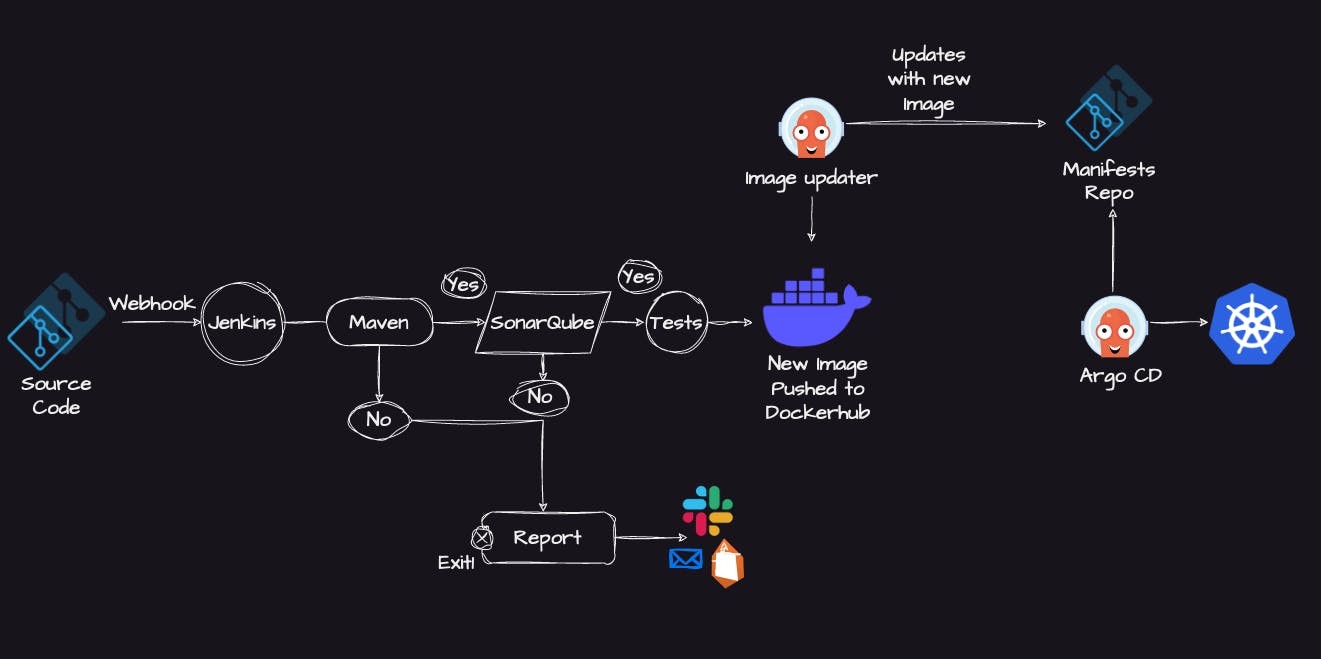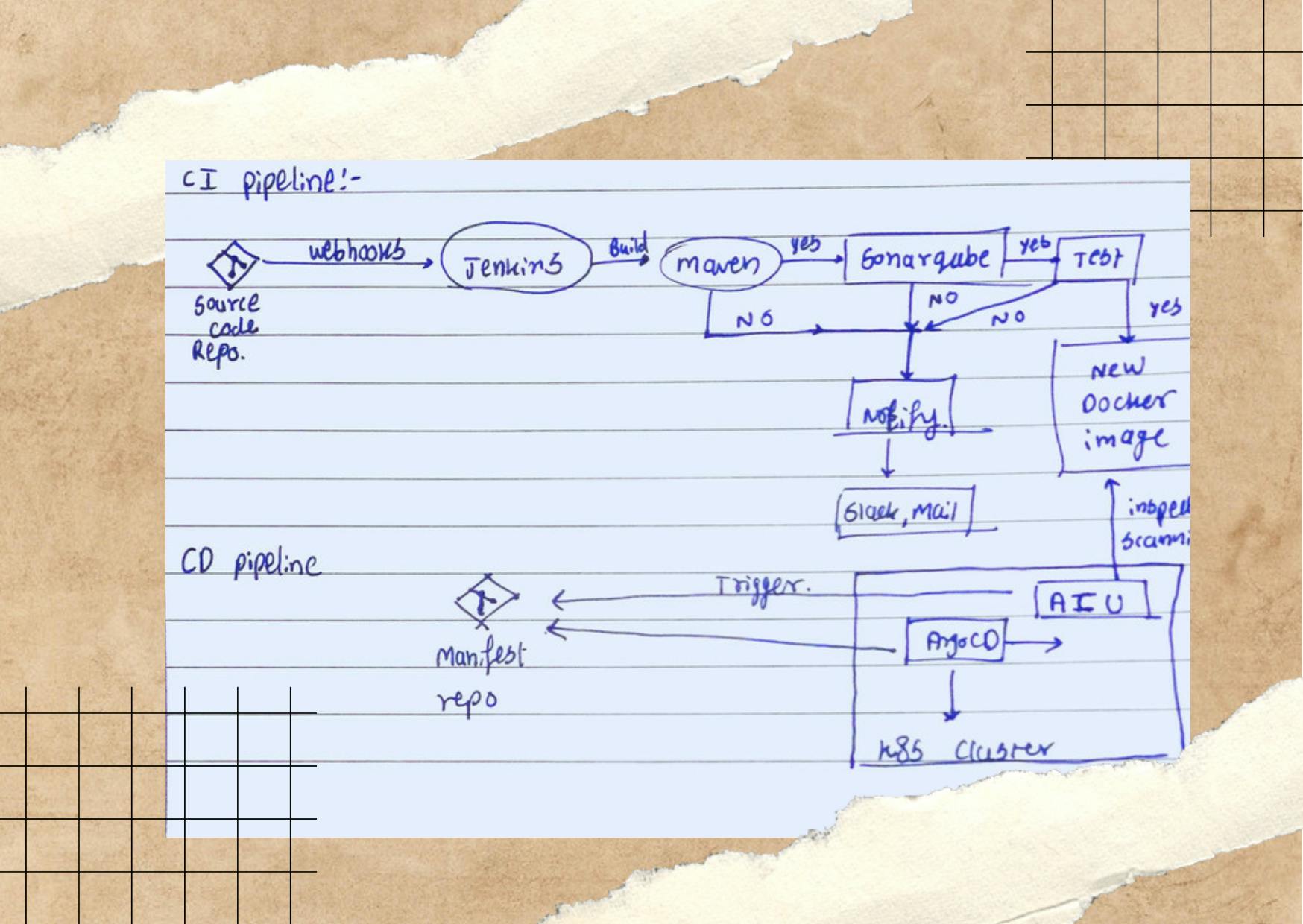
CI/CD Introduction - Part I
Part 1 of the CI/CD blog series explains the basic idea of Continues integration and Continues delivery.
Introduction
In today's fast-paced and rapidly changing software development world, delivering software quickly and efficiently has become more critical than ever before. Continuous Integration and Continuous Delivery, commonly known as CI/CD, have become essential practices for modern software development teams to ensure fast and reliable delivery of high-quality software.
CI/CD is a set of practices and tools that automate the process of building, testing, and delivering software. It helps development teams to integrate new code changes with the existing codebase more effectively, catch errors early in the development cycle, and speed up the delivery of new features and updates to end-users.
In this article, we will discuss the basics of CI/CD, and its benefits, and introduce two popular tools - Jenkins for Continuous Integration and ArgoCD for Continuous Delivery.
CI/CD:
CI/CD is a software development process that involves automating the integration, testing, and delivery of code changes to the production environment. It is a set of practices and tools that help development teams to deliver high-quality software quickly, reliably, and efficiently.
Continuous Integration (CI) is the practice of automatically building and testing code changes as soon as they are made by developers. The CI process ensures that the changes made by developers are compatible with the existing codebase and do not introduce any errors or bugs. It also helps to catch and fix errors early in the development cycle, reducing the cost of fixing errors later.
Continuous Delivery (CD) is the practice of automating the process of deploying code changes to production. The CD pipeline takes the code changes that have passed the CI process and deploys them to the production environment automatically. This process ensures that the changes made by developers are delivered to end-users quickly and efficiently.

for basic CI/CD project and more details visit this GitHub repository
Benefits of CI/CD
Implementing CI/CD has several benefits for software development teams, including:
Faster Delivery: CI/CD helps development teams to deliver new features and updates to end-users faster, reducing the time to market.
Higher Quality: CI/CD automates the process of building, testing, and deploying code changes, which helps to catch errors early in the development cycle and improve the quality of the software.
Improved Collaboration: CI/CD encourages collaboration between development teams, operations teams, and other stakeholders, which leads to better communication and understanding of the project's goals.
Increased Efficiency: CI/CD automates repetitive and time-consuming tasks, allowing developers to focus on more critical tasks such as writing code and solving problems.
Cost Savings: Catching and fixing errors early in the development cycle reduces the cost of fixing errors later, which can result in significant cost savings for the organization.

image source: https://cms-cdn.katalon.com/large_banner_16_a66f40e7d7.png
Continuous Integration and Introduction to Jenkins
Continuous integration (CI) is a software development practice that involves continuously merging code changes into a shared repository and automatically testing and building the changes. This process helps catch errors early and ensures that the codebase remains in a stable state at all times. The purpose of CI is to streamline the software development process by identifying and fixing issues quickly and efficiently, thus reducing the overall development time.
One of the most popular tools used for CI is Jenkins, which is an open-source automation server that can be used to automate many tasks in the software development process. Jenkins is highly customizable and offers a wide range of plugins that can be used to integrate with different tools and technologies. It supports various build systems, including Ant, Gradle, and Maven, and can be used to automate testing, deployment, and other processes.
In addition to Jenkins, there are several other tools available for CI, such as CircleCI, Travis CI, and GitLab CI/CD. These tools offer similar functionality to Jenkins and are often used in combination with other DevOps tools to create a complete CI/CD pipeline.
One of the benefits of using a CI tool is that it can help increase the speed and efficiency of the software development process. By automating testing and building, developers can focus on writing code rather than manually running tests and deployments. This can lead to faster development cycles and more efficient use of developer time.
Another benefit of CI is that it can help reduce errors and improve the overall quality of the codebase. By catching issues early in the development process, developers can fix them before they become more serious and difficult to resolve. This can help improve the stability and reliability of the application, which can lead to increased user satisfaction.
Overall, CI is an essential practice for modern software development. By implementing a CI pipeline, development teams can streamline their development process, reduce errors, and improve the quality of their codebase. While there may be some challenges in implementing a CI pipeline, such as cultural resistance or technical complexity, the benefits far outweigh the costs, making it a worthwhile investment for any software development team.
Continuous Delivery and Introduction to ArgoCD
Continuous delivery (CD) is a crucial part of modern software development, where the focus is on making updated applications or changes available to end-users most effectively and efficiently as possible. The CD pipeline is designed to ensure that changes, which are integrated using the Continuous Integration (CI) pipeline, are made available to end-users with the help of automation and in the most effective manner.
One of the key features of a CD pipeline is that it ensures that the workload is distributed efficiently, with minimum to zero downtime for the application. This means that updates are released to the end-users seamlessly, without any interruption in the user experience. Additionally, the CD pipeline also ensures that updates can be rolled back quickly and easily if any issues arise.
To establish a CD pipeline, it is essential to use a dedicated repository that is separate from the repository containing the source code of the application. This repository would contain manifest files that are required to make changes to the configuration of the service platform or server containers. By separating the configuration and application code, it is possible to manage them independently and make updates in a more controlled and efficient manner.
For example, if you use Kubernetes, you can set up a CD pipeline using an open-source tool called ArgoCD. ArgoCD is a continuous delivery and deployment tool that helps introduce automation in CD tasks. The ArgoCD image updater is a plugin that scans newly made container images for vulnerabilities and security issues, which in turn triggers the CD pipeline. When changes are detected in the source code repository, ArgoCD retrieves the updated code and deploys it to the Kubernetes cluster, following the deployment configuration stored in the dedicated CD Git repository.
The CD pipeline can also use deployment strategies such as Blue-Green deployment and Canary deployment. Blue-Green deployment involves setting up two identical environments (blue and green), with one environment (blue) serving as the primary production environment, while the other (green) is a clone of the blue environment. Once the updated application is deployed to the green environment and tested, traffic is gradually routed from the blue environment to the green environment. This process continues until all traffic is directed to the green environment, and the blue environment can be decommissioned.
Canary deployment involves releasing the updated application to a small group of users (the canary group) first, before making it available to the wider user base. This strategy allows for testing and feedback before a wider rollout of the update.
Conclusion
CI/CD has become an essential practice for modern software development, enabling teams to accelerate their development process, reduce errors, and improve the overall quality of their software. By using automation tools and best practices, teams can achieve faster time-to-market, increased agility, and improved collaboration while enhancing security and reliability. Although implementing CI/CD may present challenges, such as cultural resistance or technical complexity, the benefits far outweigh the costs, making it a worthwhile investment for any software development team. In short, CI/CD is not just a tool or a process, but a mindset that prioritizes continuous improvement and feedback, enabling teams to deliver better software, faster.

